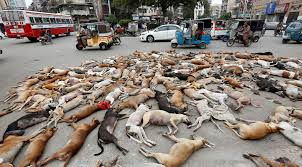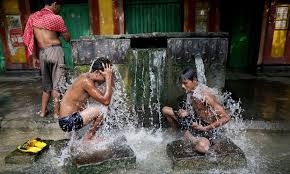Thar desert is known for its serene natural beauty, mesmerising sand dunes, fearlessly roaming peacocks, parched land, abject poverty and an impressive epitome of inter-faith harmony. During the recent years, Thar has emerged as the energy basket of Pakistan. Traces of carbonaceous material were detected when the Sindh Arid Zone Development Authority (SAZDA) and the British Overseas Development Administration (ODA) drilled exploratory holes for fresh water near village Khario Ghulam Shah in 1988.
It became prelude to Thar coalfield exploration and demarcation under the Coal Resources Evaluation and Appraisal Programme (Coal REAP) of the USAID carried out by the Geological Survey of Pakistan (GSP) and the United States Geological Service (USGS). The prognosis was immensely promising that ultimately discovered the fortune of an estimated 175 billion tonnes of coal sprawled over 9,100 sq. kms. The area has been divided in 12 blocks. Mining and power generation at block-2 is currently under way.
Sindh Engro Coal Mining Company (SECMC) excavating 1.57bn tonnes of coal to build a 660-megawatt power plant is fast approaching a layer of water which requires safe disposal. As per the contractual arrangement, the government of Sindh (GoS) that own 54 per cent shares in the project is responsible for external components of the project including effluent disposal.
Environmental Impact Assessment (EIA) of the mining projects was conducted by a renowned consulting concern Haigler Bailly Pakistan. However, scope of the EIA does not cover social and environmental impacts on the potential site for disposal of effluent to be pumped out during mining operation. EIAs normally cover the whole spectrum of activities of a project. Effluent disposal is a critical component of such projects and one fails to understand the logic behind excluding it from the scope of EIA.
The EIA report estimates that 990 liters per second water will be pumped out during mining. It proposed few options for effluent disposal including inter alia evaporation ponds, reinjection into aquifer and disposal to Rann of Kutch and salt lakes. Limitations of each option were also provided. SECMC is genuinely desperate for a functional effluent disposal arrangement so that mining continues without pause. However, a customary tardiness of the Sindh government ultimately culminated in the prevailing chaos.
The GoS identified a few locations to construct evaporation ponds for the effluent. It is claimed that the controversial site of Gorrano was identified after assessing comparative advantages and disadvantages of various disposal sites. The GoS claims that a separate EIA was conducted and a public hearing was held; yet no such study has been made public.
Only two studies are available that discuss the impact of effluent disposal. These studies were conducted by the Rheinisch-Westfälisches Elektrizitätswerk (RWE) and the Engineering Associates (EA). The EA in collaboration with NED University conducted hydro-ecological impact of water disposal site for mining project. The RWE conducted feasibility study of overall project which did not mention any disposal site except salt lakes and the Rann of Kutch. The study did not recommend disposal of the brine at these locations due to a very high level of Total Dissolved Solids (TDS), 20,000 ppm against 500 ppm of fresh water.
The GoS initially decided to use Dhukar Chho village, a natural depression of 692 acres located 37 kms away from the mining site for effluent disposal. Maintaining its tradition of nepotism the contract was awarded to a private company to appease the party supremo. The company not only failed to construct the pond but also resorted to excessive methods to dislodge local community who owe their livelihood to this fertile piece of land. Later on the GoS consultants realised that the proposed site does not offer enough space to accommodate the effluent over longer period. Subsequently, the GoS and SECMC decided to use Gorrano village, located 26 kms away from the mining site as a natural depression of approx. 1500 acres for constructing effluent disposal pond.
Gorrano site has an advantage of being a natural depression surrounded by stable sand dunes from three sides making it almost a naturally constructed reservoir. Lesser cost of construction and minimum distance from the mining site made it a bewitching option for disposal. On the other side, inhabitants of 12 villages located in the immediate vicinity claim that the depression is one of the most fertile pieces of land in the locality with vast tracts of arable land, water wells and a large number of Kandi trees. The particular tree is a drought-resistant species providing rare forage for livestock, which is the nutrition mainstay for communities. A mature tree of Kandi and a goat are considered lifeline assets for a poor Thari as these two entities are key ingredients of community coping mechanism against elongated arid drought spans.
Although a small number of people possess titles of land ownership at the proposed site, a large number of villagers plough their land inherited from forefathers but not legally transferred to them as per the revenue record. Undocumented inherited land ownership is a common practice in Thar like many other parts of the country. Additionally, the area is a precious grazing land for thousands of cattle heads owned by the community. They also collect drinking water from dug wells located inside the pond area.
Outlandishly, the GoS did not conduct any social and environmental impact assessment and did not develop any comprehensive compensation plan for the affectees of Gorrano site. Bulldozers of the contractors rumbled the standing crops without negotiating any compensation plan and tried to expropriate land of the people not having registration documents. This atrocious and insolent behaviour sparked resentment among the local community who remonstrated and started hunger strike outside the press club of Islamkot town. A group of local activists supported these helpless villagers to amplify their voices.
Meanwhile, the GoS involved SECMC to supervise and monitor the construction of disposal reservoir. The company scrambled to engage the infuriated community with assurances of compensation but the damage done at the initial stage precluded any amicable solution. The community is not willing to subscribe to verbal guarantees in absence of a formally negotiated and a credible compensation framework. In a bid to ensure timely arrangement of effluent disposal, SECMC unnecessarily got entangled into a controversy and took a lot of flak for a task that is responsibility of the GoS.
The GoS is acquiring land under the Land Acquisition Act 1894 that bestows unbridled powers on the government to acquire land in the name of public purpose. The Act does not recognise rights of landowners without land title. Out of 1500 acres under the pond, only 532 acres are under private possession and the remaining 968 acres are under traditional collective community use. This makes life difficult for hundreds of landless people in the vicinity who depend on natural resources of the location for their sustenance.
Multilateral aid agencies, as against the aforementioned Act, also recognise the rights of landless people and give due consideration to livelihood rights. Section GN.3 of the guidelines of the International Finance Commission (World Bank Group) on Land Acquisition and Involuntary Resettlement reads “the loss of access to common property resources and natural resources is an important consideration when evaluating a project’s impacts on affected communities’ and households’ livelihoods. The types of assets to which access might be lost could include, but are not limited to, pasture, fruit trees, medicinal plants, fiber, firewood, and other non-timber forest resources, croplands, fallow lands, woodlots, and fish stocks. Whilst these resources are, by definition, not owned by individual households, access to them is often a key component of affected households’ livelihoods, without which they will likely face the risk of project-induced impoverishment. Section GN.8 recognises affectees with customary claims to land and those with no legally recognized claims, as well as seasonal natural resource users such as herders, fishing families, hunters and gatherers who may have interdependent economic relations with communities located within the project area.”
Considering the fact that about a dozen of exploration blocks are yet to be developed, it is high time to conduct a Strategic Environmental Assessment (SEA) for macro-level planning before the impacts become irreversible. It is ironic that the government is not willing to recognise right of communities on their natural resources and agree on a compensation plan encompassing such claims. This obduracy of decision makers has resulted in a stalemate. Local community, political parties and civil society are opposing the construction of the pond and demanding to identify alternative disposal sites. This project will be a trailblazer for future interventions in the area and therefore it is pivotal to offer an altruistic compensation package in consonance with local social context. Amicably resolving this controversy will pave the way for greater ownership of the local community and set a healthy precedent for future projects in the area.









